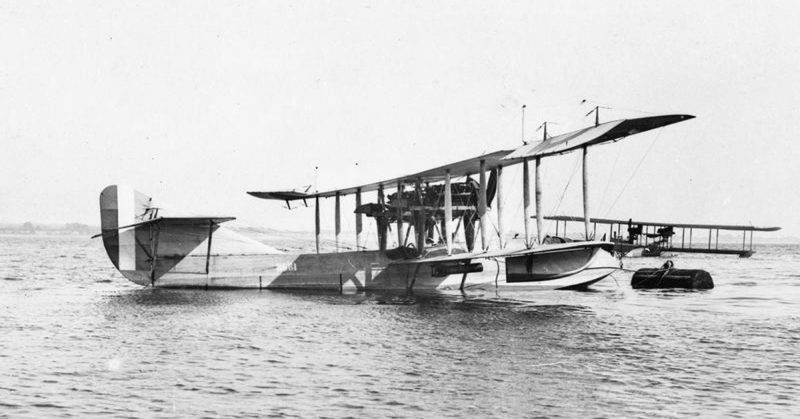The First World War was not the first time that planes had been used in warfare, but it was the first time they were deployed on a large scale. As a result, the war saw a lot of innovation in aerial warfare. One of these innovations was the use of seaplanes.
The Role of Seaplanes
Seaplanes were specialist aircraft designed to take off from and land on water instead of solid ground. To do this, they had floats in place of wheels. Flying boats – aircraft with waterproof hulls that landed directly on the water – played a similar role but were less common.
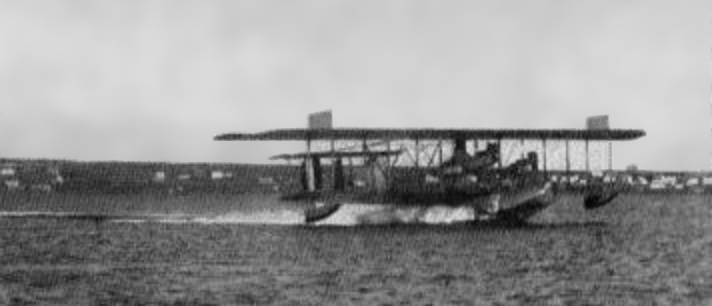
Most seaplanes were based at stations on the coast, but some operated out of ships called seaplane tenders. The British, with their substantial navy and pride in dominating the seas, made particular use of this approach.
Whether working from ships or coastal bases, these planes could only be used in calm weather. Their designs weren’t advanced enough to manage takeoffs and landings on anything other than smooth water.
At the start of the war, aircraft were mostly used for reconnaissance, and this remained their principle role throughout the war. But like their land-based cousins, they also found use in combat too.
Seaplanes in Combat
Seaplanes were used to attack enemy ships. This was usually done using bombs which, as on land, were initially dropped by hand. Aerial bombardment was in its infancy, and these bombs had nowhere near the power of the ones that would later be utilized in strategic bombing offensives. But seaplanes enabled both sides to reach targets that land-based planes could not due to the limits on their range and the armed forces’ ability to direct them onto targets.
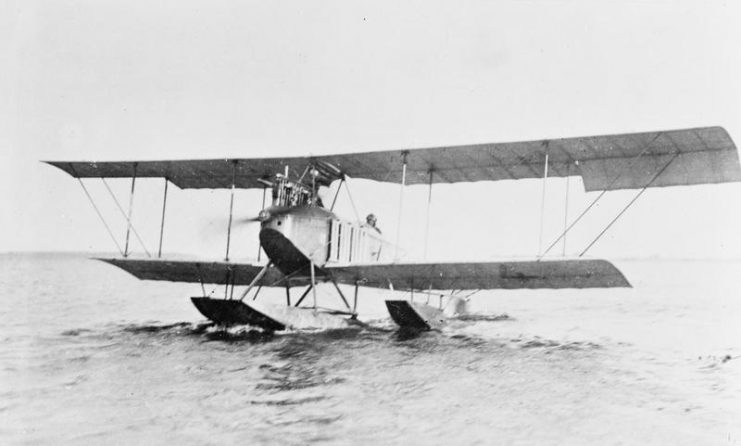
Both sides also experimented with dropping torpedoes from seaplanes. However, these were heavier than bombs, and the extra weight was usually too much for the aircraft’s engines.
The first successful deployment of a torpedo from a plane was carried out just before the war, in July 1914. It was done by a British aircraft, and the British would go on to create the world’s first torpedo-bomber.
Fights between groups of seaplanes were rare. One of the few that did take place occurred on the 4th of June 1918, when five Felixstowe F-2As and a Curtiss H-12 engaged 14 German planes. The outnumbered British destroyed six of their opponents and fought off the attack, losing only the Curtiss.
British Seaplanes
Founded on the 1st of January 1914, the Royal Naval Air Service (RNAS) was responsible for Britain’s seaplanes. It was the largest naval air arm of the First World War, and by the time it was absorbed into the Royal Air Force (RAF) it had 50 squadrons, mostly working out of coastal stations, as well as individual seaplanes serving from ships.
The RNAS had several different types of seaplane at its disposal.
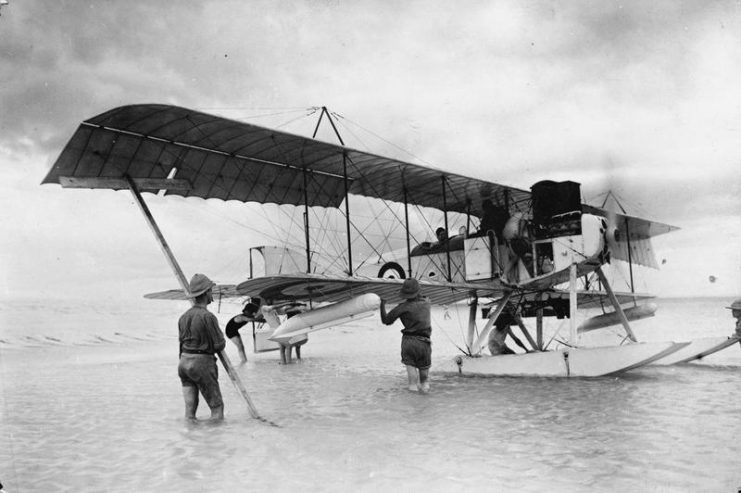
One of the first planes the British used at sea was the Sopwith Schneider. This was adapted from a pre-war plane that had won the Schneider trophy in 1914. 136 Schneiders entered service between early 1915 and 1916. They were used in patrols looking out for German airships and in anti-submarine attacks. The pace of change in aircraft technology was rapid, and after only a year of service, the Schneider was replaced in 1916.
The Norman Thompson NT-4 and NT-4A were twin-engine planes. Equipped with light bombs, they were used against German submarines, the scourge of Allied shipping during the later war. Several squadrons were made up of these planes.
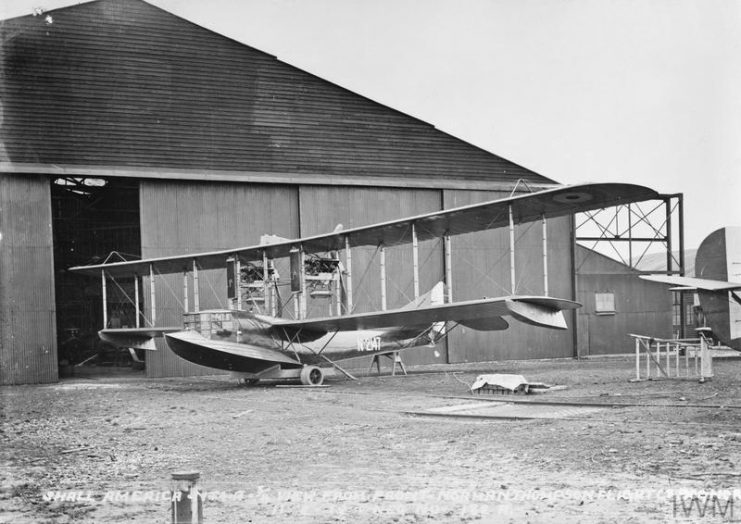
First entering action in 1917, the Felixstowe F-type was a flying boat design rather than a seaplane. It became one of the most successful naval planes of the war, as it handled well and could stay in the air for up to 10 hours. Its crew of four was unusually large for a combat plane of the era, and its top speed of 95 miles per hour was relatively slow, but it packed enough of a punch to make up for this. In May 1918, an F-type shot down a German airship.
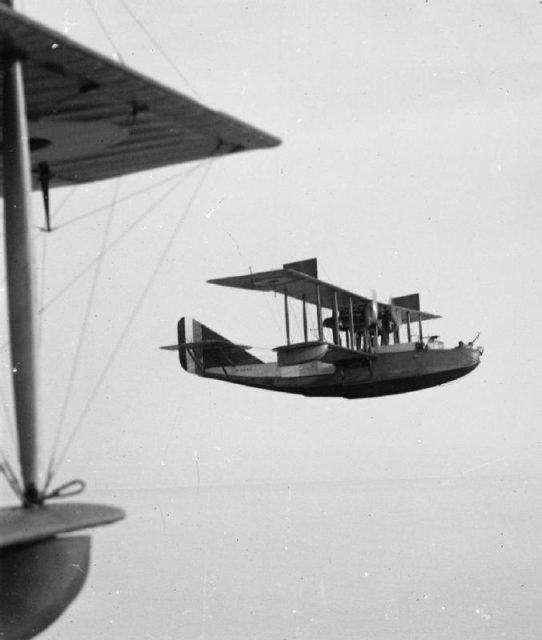
Following their successful pre-war tests, the British developed the first torpedo-bomber, the Short 184. This two-seater plane joined the RNAS in 1915, and in August that year, a 184 entered the history books as the first plane to sink a ship using a torpedo. The 184 was later joined by the Short 320, another torpedo-bomber. But dropping torpedoes was proving a dangerous activity for planes, and these aircraft later stopped using torpedoes.
German Planes
As Britain’s main competitor for domination at sea, the Germans also had a substantial naval aviation service. On land, their pilots had the edge for much of the war, as they developed tactics ahead of the Allies and fielded a series of technologically superior planes. But they never gained the same dominance over the seas. The power of the Royal Navy made it harder for them to deploy seaplane tenders into contested waters.
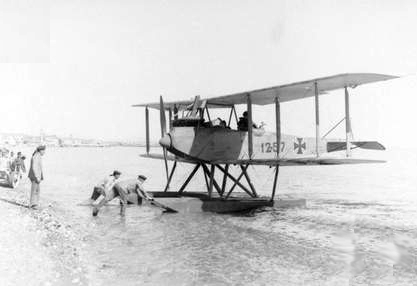
Friedrichshafen was one of Germany’s leading seaplane producers. Starting in 1914, the company provided German aviators with the FF-33 series of seaplanes, which filled a variety of roles. The FF-33e was a reconnaissance plane which carried a two-way radio as well as a supply of bombs. The FF-33I was the fighter equivalent.
The rough conditions of the North Sea led Friedrichshafen to produce a tougher design, the FF-49. This entered the war in May 1917, replacing the FF-33s.
Other German seaplanes included the Albatros W-4 and a series of planes from Hansa-Brandenburg.
Other Countries
Most countries in the war had some seaplanes, though none of the others matched the British and German achievements in this area. The Austro-Hungarians mostly used German planes, though they also created their own Löhner L flying boat. The Italians produced several nautical planes, such as the Macchi M-5 fighter.
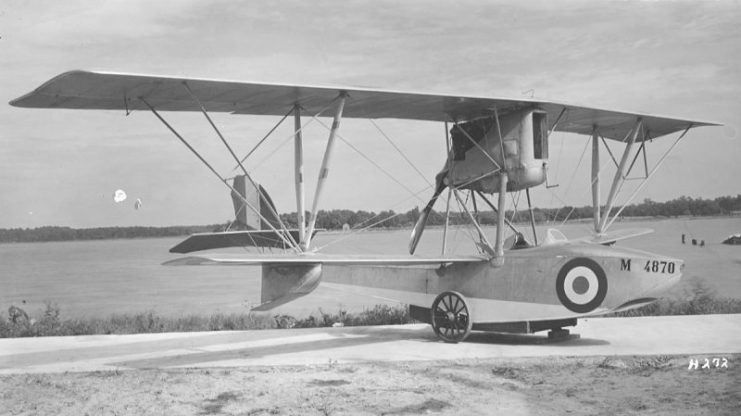
By the start of the Second World War, aircraft carriers would offer a better alternative to seaplane tenders. But during the First World War, seaplanes and flying boats let both sides take the air war out to sea.
